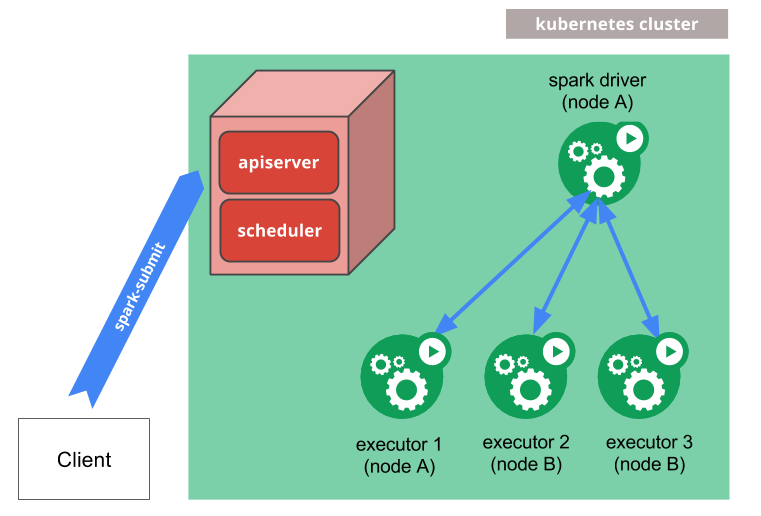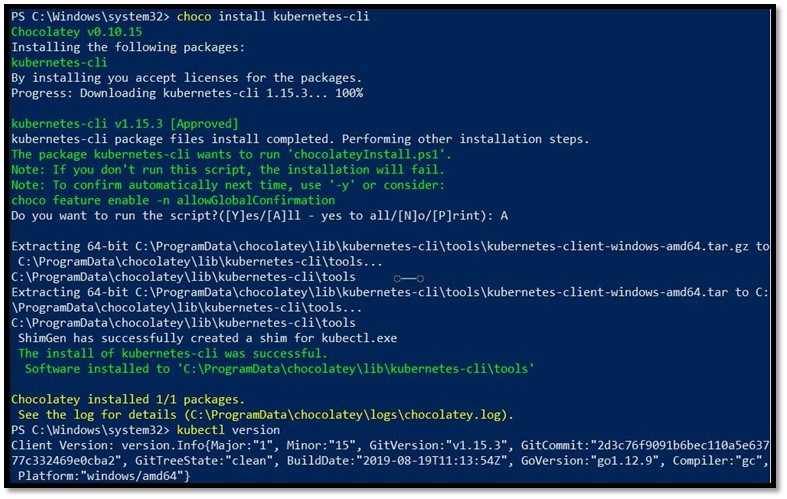

- INSTALL DOCKER ON KUBERNETES CLI HOW TO
- INSTALL DOCKER ON KUBERNETES CLI INSTALL
- INSTALL DOCKER ON KUBERNETES CLI UPDATE
- INSTALL DOCKER ON KUBERNETES CLI UPGRADE
- INSTALL DOCKER ON KUBERNETES CLI REGISTRATION
INSTALL DOCKER ON KUBERNETES CLI UPGRADE
Upgrade the agentk installations after upgrading GitLab. We recommend upgrading your kas installations together with GitLab instances’ upgrades, and to If your GitLab version is 14.2, use at least agentk 14.2 and kas 14.2. To ensure it works, use at least the same agentk and kas minor version. For example,Īgentk 14.4 supports kas 14.3, 14.4, and 14.5 (regardless of the patch).Ī feature introduced in a given GitLab minor version might work with other agentk or kas versions. The required kas version corresponds to the GitLab major.minor (X.Y) versions.Īt the same time, agentk and kas can differ by 1 minor version in either direction. GitLab provides kas installers built into the various GitLab installation methods. The agent has two major components: agentk and kas.
INSTALL DOCKER ON KUBERNETES CLI UPDATE
Now you can update from the upstream package by using kpt pkg update gitlab-agent -strategy resource-merge.

Update the advanced installation base layer

To view all available options, open a terminal and run this command: You can edit these parameters to customize the one-liner installation command. Creates a Deployment resource for the agentk pod.
INSTALL DOCKER ON KUBERNETES CLI REGISTRATION
INSTALL DOCKER ON KUBERNETES CLI HOW TO
INSTALL DOCKER ON KUBERNETES CLI INSTALL
To install the agent on your cluster using the one-liner installation: It or opt to the advanced installation method. If you don’t have it, you can either install

The one-liner installation is the simplest process, but you needĭocker installed locally. Method to benefit from more configuration options. For long-term production usage, you may want to use the advanced installation You can use the one-liner installation for trying to use the agent for the first time, to do internal setups with To connect your cluster to GitLab, install the registered agent You need it when you use the one-liner installation method to install the agent in your cluster. Copy the command under Recommended installation method.You need it to install the agent in your cluster and to update the agent to another version. GitLab generates a registration token for this agent.From the Select an agent dropdown list, select the agent you want to register and select Register an agent.From the left sidebar, select Infrastructure > Kubernetes clusters.On the top bar, select Menu > Projects and find the project that has your agent configuration file.In the project that has the agent configuration file, ensure that GitLab CI/CD is enabled.Prerequisite when using a GitLab CI/CD workflow: When you register the agent, GitLab generates a token that you need to Now that you’ve created your agent configuration file, register it Introduced in GitLab 14.1, you can create a new agent record directly from the GitLab UI.


 0 kommentar(er)
0 kommentar(er)
